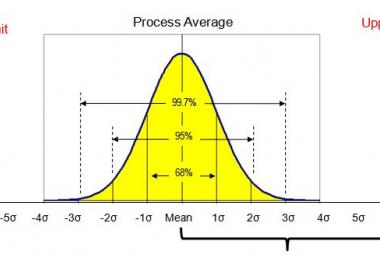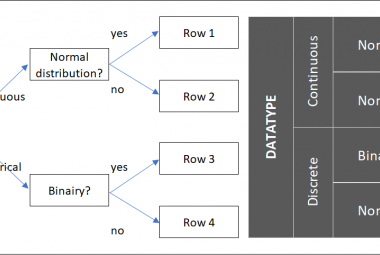Lean is a philosophy based on a cultural aspect and a tool aspect. The tools used to implement Lean are traditionally visualized using a house format. Many academics preceded me and developed their own version of the Lean house, which included a combination of tools, looking something like this:

Each house is built in different building blocks. There is a foundation of the house and a number of pillars. The foundation of the house needs to be built before the pillars, therefore the tools described in the foundation should be implemented before one can start implementing tools from the pillars. The difficulty with these Lean houses I find, is that the connection between the tools relatively difficult is to describe. In my opinion, the interrelationship between the different parts of the house should be clearly described in less than two sentences.
Lean implementation in 5 phases
At my current employer, Lean is implemented in 5 phases. The factory defines it’s (lean) vision (1), the foundation of Lean is implemented on a pilot location (2), the process is repeated at all other locations in the factory (3), larger improvements can be implemented (4), which leads to the never ending world class phase (5). The foundation plays the larger role in this implementation in which participation of all employees is required. After the foundation is implemented in the entire factory, project teams can start working on implementing greater improvement tools like SMED or Kanban with the help of other employees
Lean House – T. Panneman
In my personal view, a Lean house which is useful for all employees should consist only the tools that are important for all employees. It should therefore contain only the tools that are used in the foundation phases of implementation. The connection between the parts of the Lean house (tools) should be described as such, that it is easy to understand how to use the tools properly (cultural aspect). The Lean house I describe has four tools which should be used as a foundation for a cultural change. The goal is described in the roof: happy customers and motivated personnel. The four building blocks of the Lean house are:

- 6S, a clean workspace motivated employees, plus, the cleaning part helps to discover possible problems before they arrive.
- Standard work. Knowledge and skills should be recorded as the basis for improvement, for training, and to prevent important knowledge leaving the organization when an employee leaves.
- Communication cell. The trigger for all communication within shifts, between shifts and between departments. This way everybody can know exactly what is happening within a department or the organization
- Kaizen. Everybody should be able to implement small improvements, the kaizen, and thereby improving standard.
These four tools are interrelated. A Kaizen (improvement) will always lead to a change of standard – in either working procedure or 6S standard – which will be communicated via the communication cell.
Only after all employees embrace these basic methods, larger tools like SMED, Heijunka, TPM and Kanban can be implemented. The changes resulting from these tools will then be recorded in standard work and shared throughout the organization via the communication cells. Using the Kaizen loop, everybody can be involved in these larger programs as well.
Follow-up
To track progress in implementing the Lean house in different departments at ones, the Lean house is split in 20 detailed steps. At the beginning, all cells in the detailed house are light green. When a certain aspect is implemented, the cell is coloured darker green. This way of tracking progress has two advantages. It visualizes the implementation process (1) and all employees know exactly what the next step of implementation is in their own department.
This is article 1/5 from the series ‘Lean House for the Shopfloor‘
Continue to:













